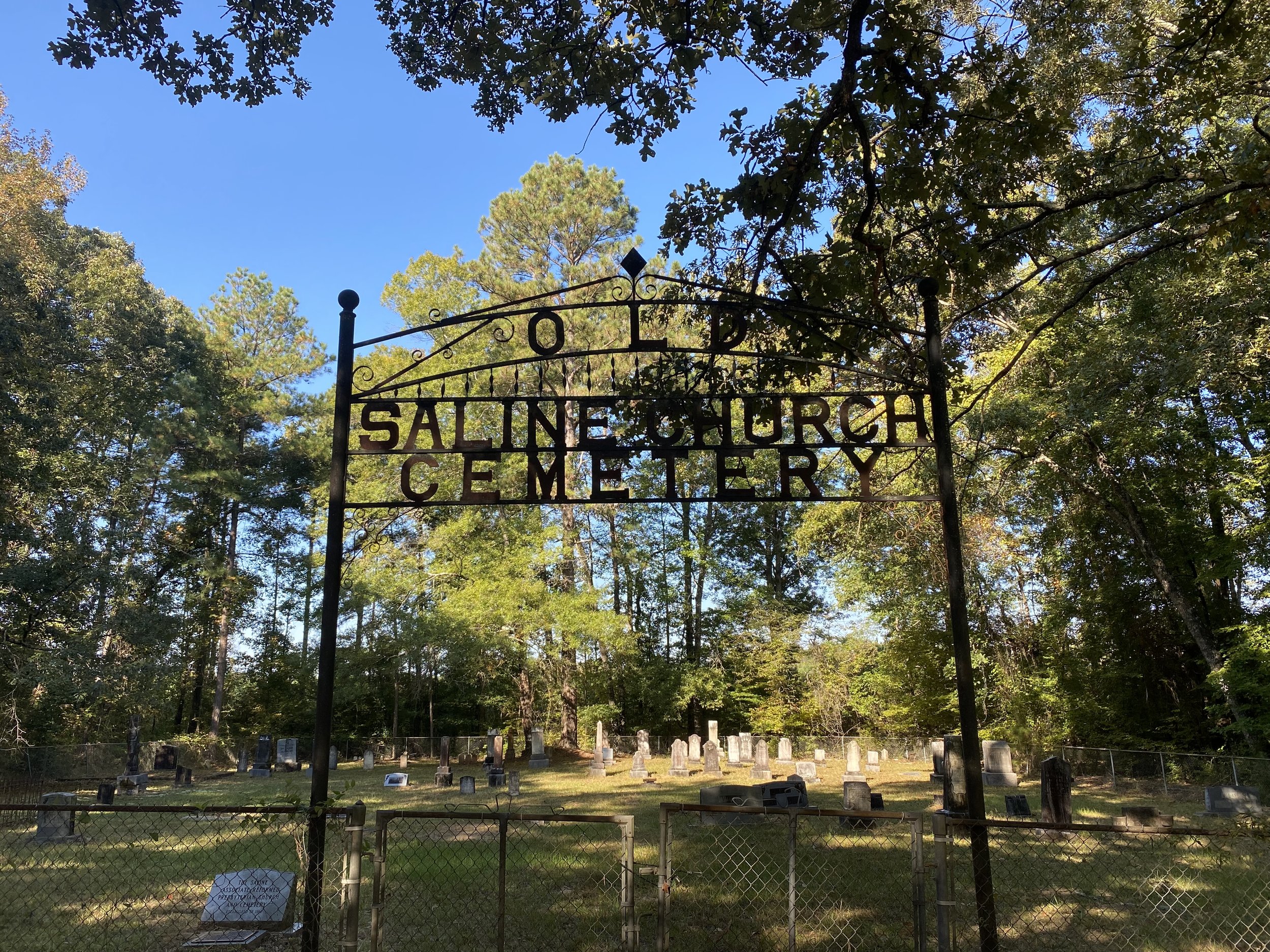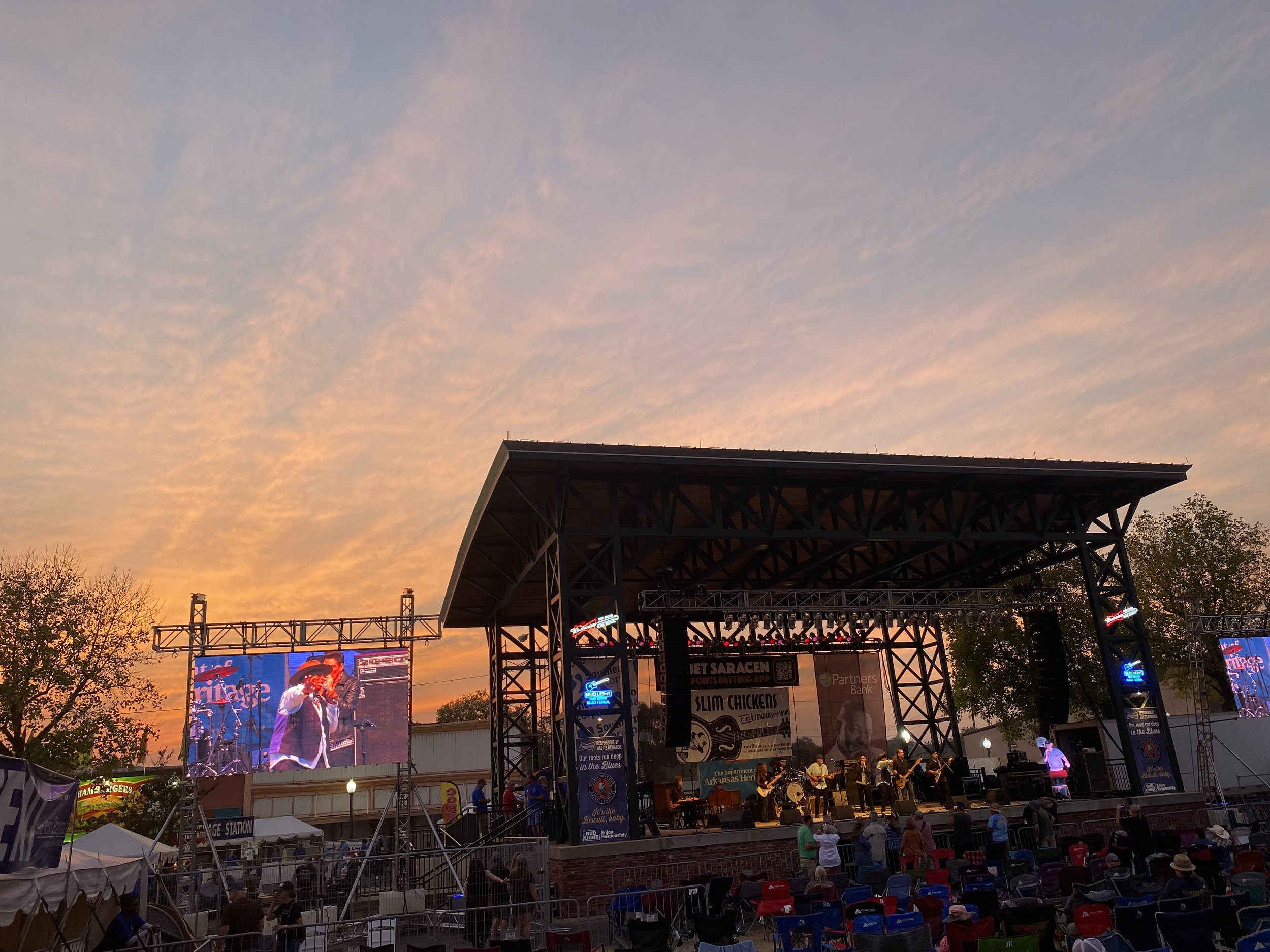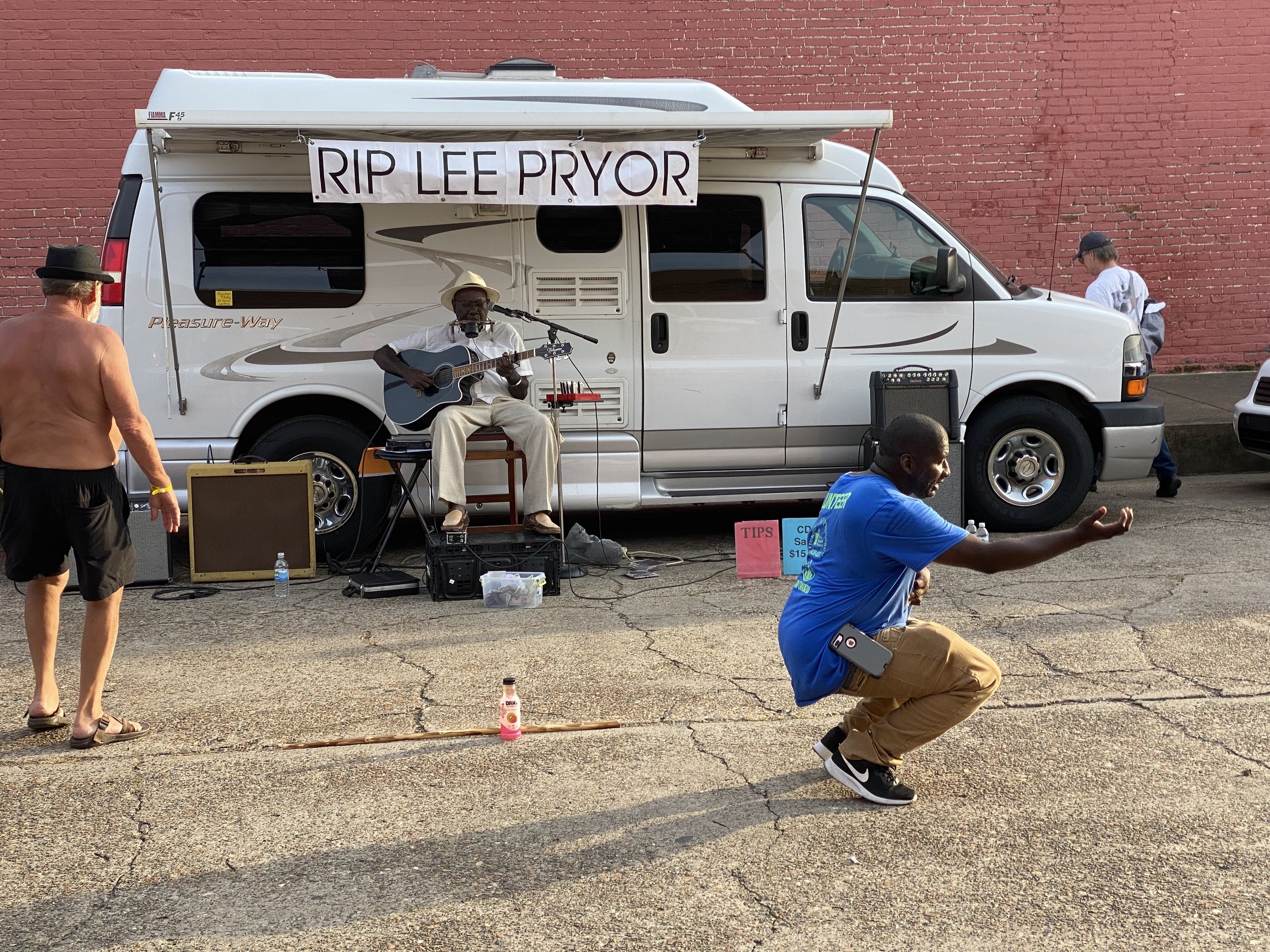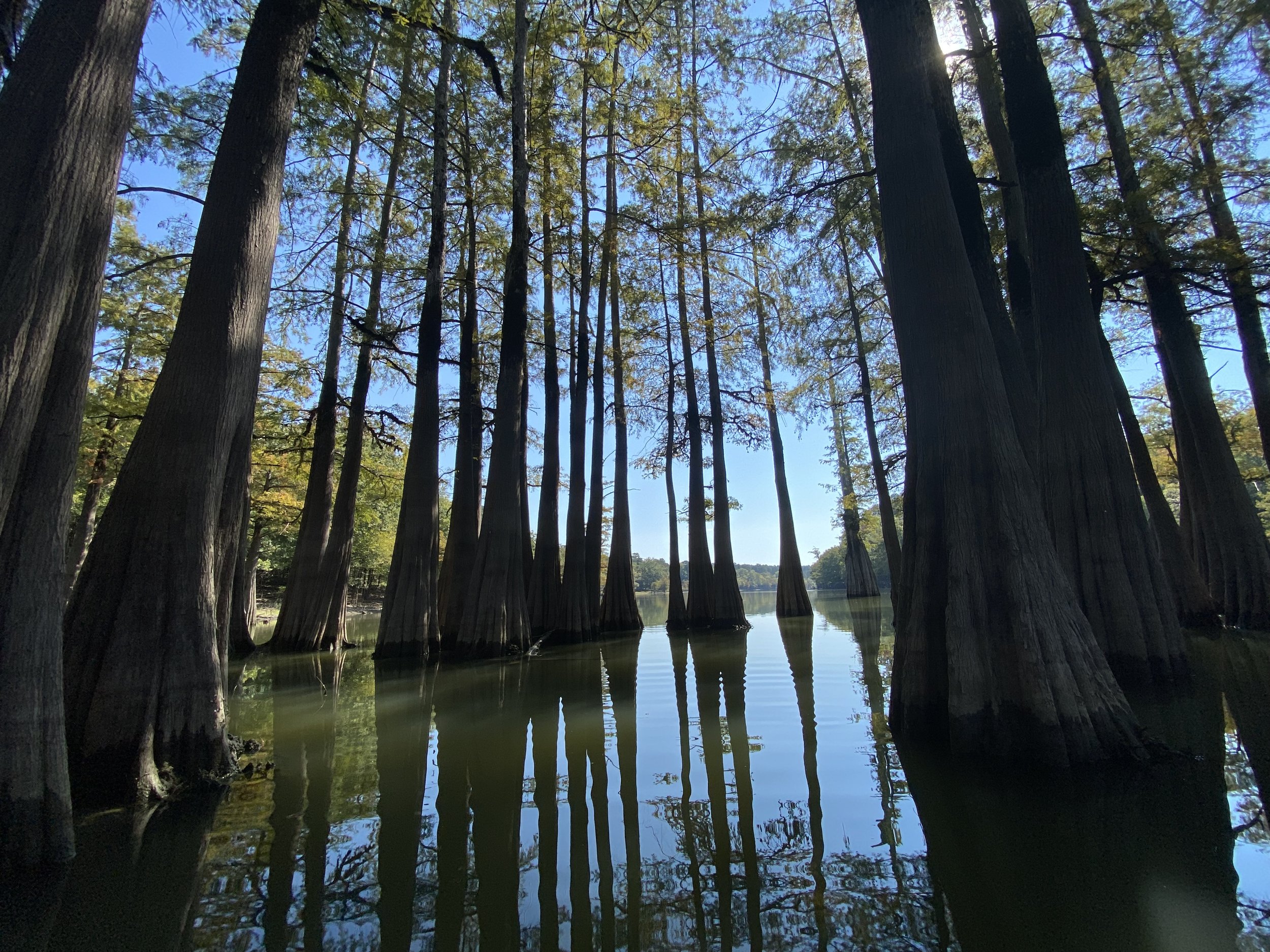



Blues and Roots
Part 2: Arkansas
Looking for the Blues and my family history, I cross the Mississippi River into Arkansas near Helena.
The Mississippi Delta isn’t a delta in the dictionary sense. It’s not where the Mississippi River meets the Gulf of Mexico, though it shares some geological similarities. It’s bottomland, flat as a pancake, made fertile first by thousands of years of river flooding, then by the interventions of agribusiness and the Army Corps of Engineers. One definition locates the Delta between the Mississippi and the Yazoo rivers, which meet in Vicksburg. It’s said the Delta starts on Vicksburg’s Catfish Row and ends in the lobby of Memphis’ magnificent Peabody Hotel.
But those definitions unfairly exclude the Arkansas side of the Mississippi. The broad floodplain on the Arkansas side is just as flat as on the Mississippi side, its cotton fields stretching to the horizon – “white for the harvest” this time of year, as my Aunt Mame would say. As on the Mississippi side, Arkansas Delta people are mostly black, mostly poor, scarred by slavery and racism. The Arkansas side is also rich in musical heritage, giving us the likes of Johnny Cash and Al Green, Conway Twitty, Levon Helm and Sister Rosetta Tharpe. It’s also the home of the King Biscuit Blues Festival, which is what brings me to Helena.
Helena was a major river port back before the Civil War, bigger than Memphis. It had strategic value as well. The Union army took control of the city in 1862 and began building fortifications, helped by thousands of refugees, escaped and newly emancipated, who had fled to the Union lines. In the summer of 1863, the Confederates, hoping to relieve the pressure on besieged Vicksburg, attacked Helena, and the shelling all but destroyed the downtown. Union forces, which included some of the first African-American fighting units, drove back the assault and the Confederates retreated. The battle, fought on July 4, 1863, was a major victory for the North, but it’s overshadowed by two other events that happened on the same day: the surrender of Vicksburg and Lee’s retreat from Gettysburg.
Helena rebuilt slowly after the war and had regained some of its prosperity by the 20th Century. Then came the Great Flood of 1927, which wiped out the downtown again. Helena has limped along ever since. In 1941, the local radio station began producing a live program every noontime featuring Sonny Boy Williamson and other Delta bluesmen and sponsored by King Biscuit Flour. It was the first radio show devoted to African-American music, and it still broadcasts daily. Today there are more empty brick buildings in downtown Helena than occupied ones. But for one weekend every October, vacant lots become stages and Cherry Street is lined with buskers. A tent city grows in a park by the Mississippi. Thousands of people fill an amphitheater formed by the back of the levee and Helena rocks with the Blues.
I visit the Mississippi River the morning after I arrive, a nice park on the other side of the levee. Old Man River is flowing slow and low, with sandbars showing on the Arkansas side. Thanks to drought in the upper Midwest, the river is near record lows. The Army Corps is dredging fast as they can, but barges can’t load to full capacity and several times the river has been closed entirely. Two-thirds of the nation’s grain harvest normally gets to market on Mississippi barges, but not this year.
I stop at a park south of town where black refugees camped and black troops held off the Confederates, and walk the ramparts of a replica of Fort Curtis, the Union redoubt. I stop at Court Square, where a band of longhaired white boys are playing for a tiny crowd, too loud and too hot for noontime. I notice a large black monument on the other side of the square with an engraving that meant nothing to me: “Elaine Massacre Memorial,” it says on one side, and on the other “Dedicated to those known and unknown who lost their lives in the Elaine Massacre.”
I look up the details later. In 1919, World War I was over, cotton prices were high and workers across the country were organizing. In the Delta, harvest time was when plantation owners settled up with their sharecroppers, a one-sided negotiation that generally ended with the sharecroppers getting less than their fair share.
A secret meeting of sharecroppers was called for Sept. 30, 1919, at a church in Hoop Spur, between Helena and Elaine, to talk about how to get a better deal. The meeting had been organized by the Progressive Farmers and Household Union, which had been signing up members in the Arkansas Delta since spring. Two armed men were posted outside the church to guard against trouble, and trouble showed up, in the form of two white men, one of them a railroad guard and the other a sheriff’s deputy. Stories differ over who fired the first shot, but in the end one of the white men was dead, the other wounded.
The reaction was fierce. The next morning a posse came to arrest suspects in the shooting, and they soon had help. An estimated 500 to 1,000 armed white people from surrounding counties and across the river in Mississippi showed up to quell what they called an insurrection. Fears of a black insurrection run deep in Southern history, especially in places like Phillips County, where blacks outnumbered whites 10 to one.
The vigilantes went on a rampage, arresting hundreds of black people and shooting others on sight. The governor requested federal troops to restore order, and they joined in the killing. A newspaper reporter later said soldiers had “committed one murder after another with all the calm deliberation in the world, either too heartless to realize the enormity of their crimes, or too drunk on moonshine to give a continental darn.”
Estimates run as high as 300 killed, almost all of them black. More than 100 blacks were charged, and a dozen of them – the “Elaine Twelve” in newspaper headlines – were sentenced to death. It was a national story at the time, now mostly forgotten but for a black stone memorial in Helena.
As for the Blues, the King Biscuit is everything I’d hoped. Mavis Staples was the main draw for me, but there are bands on every street corner and solo performers line the sidewalks, presenting every shade of Blues. I notice, not for the first time, while the Blues started with black people, its audience today is mostly white, and mostly older folks like me. I drink my fill and move on.
Sometimes it seems that wherever I go, I run into the darker chapters of American history. An hour or so south of Helena, I stop at the Jerome-Rohwer Interpretive Museum, a converted railroad depot that commemorates the Jerome and Rohwer Detention Camps, where nearly 16,000 Japanese Americans were imprisoned during World War II. The modest displays inside walk a fine line, condemning the injustice of the concentration camps while celebrating the communities that grew within their fences. A bit further west, I rent a kayak at Moro Bay State Park, paddling quietly through the bald cypress trees of the bayou. A dusty display at the visitors center tells me members of the Choctaw tribe were driven through here back in 1831, trudging through “swamps of waist-deep water,” forced by the U.S. government to leave their homes on the eastern side of the Mississippi for the unknown land we now call Oklahoma.
My ancestors had followed a similar route a few years later. The Davis family had headed west from the Carolinas, settling first outside Oxford, Mississippi, just after the Chickasaws had been pushed out. In 1859, they moved again, crossing the river into Arkansas. They wanted a place where there was ample land for their growing family, and they wanted it to be upland. An uncle had tried to start a plantation in the Delta, only to see his crops fail and his enslaved work force decimated by malaria. The Davises found forested land in Drew County, a few miles west of Monticello. They cleared the land, sold the timber and planted cotton. They built a church and founded a community they called Allis. I had come to Arkansas to find Allis.
In the family lore, Allis is a pretty big deal: a community hacked out of the wilderness, the culmination of the Davis family’s dreams. In its prime, Allis had a post office, a boarding house, a general store and a stop on the railroad. My great-great-grandfather and two others had each chipped in $3.33 to buy five acres, on which they built a church they named Saline, after a nearby creek, with space for a cemetery.
Allis isn’t even a spot on the map today, but Google lists South Allis Road, between Monticello and Wilmar, so I start there, early on a Sunday morning. A dirt road, in good condition, South Allis Road is straight and silent. Two deer stroll across in front of me, in no hurry to get anywhere. I stop at a rail crossing, figuring the town settlement would likely be near the railroad, but find no buildings, nor obvious foundations. The road continues, mostly through woods, and past some power lines. I see a few houses, widely scattered, none of them old enough to have housed my ancestors.
On my second pass, I spot the clearing, set back from the road. A short chain-link fence surrounds a handful of weathered graves, its gate held shut by a frayed bungee cord. A handsome wrought-iron arch above the gate reads “Old Saline Church Cemetery.” Inside, I find all that remains of several generations of my Davis forebears: several rows of modest headstones. There’s Robert G. Davis, who brought the family from North Carolina to Drew County; Margaret Nelson Davis, his wife; Robert Calvin Grier Davis, his son; and his wife, Allie Coleman Davis, who was my mother’s grandmother and namesake.
There are 106 marked gravesites in Old Saline, the oldest dated 1878. A stone marker honors Sarah Nisbet Davis, the family matriarch and inspiration for its travels west. She made it to Arkansas in 1859, but died before the cemetery was established. The marker says she’s buried on North Bailey Street in Monticello, but I couldn’t find any graves on North Bailey.
The cemetery is well maintained, thanks to the Davis family, which has taken care of it since 1861. It’s protected through a listing on the National Register of Historic Places. It’s not accepting new residents, and doesn’t seem to get many visitors. But it’s lovely, and welcoming. I sit awhile at the feet of my distant relations, the sun dancing through the leaves above, thinking about how their journeys connect with my own. There’s no sound but the calls of woodland birds. The the ghosts of Allis are silent.
Allis began to fade when a lumber company built a large mill in Wilmar, just down the road. Wilmar “knocked the shine off Allis,” according to one family account, and the Davises gradually moved on. The forest has reclaimed the yards and farms once known as Davis Row. The only Davises in Allis today in a row in Old Saline Cemetery.
I’m struck by how little we leave behind. The land my great-great-grandfather cleared outside Oxford, Mississippi, appears as undisturbed as when he found it, if you don’t count Rte. 202. The community my great-grandfather built in Drew County, Arkansas, is but a name on a road marker. The school my grandfather established outside Ripley, Mississippi, is barely remembered.
My grandfather left Allis as a young man and never put down roots. He’s buried in Virginia, 750 miles from Old Saline. His descendants, my closest relatives, are all over the country, but not in Arkansas. For our little branch of the Davis family tree, there’s no ancestral homestead, no common hometown. Our parents’ gravesites are spread across the map, their ashes scattered in various places that had meaning for them or their children.
And that’s fine; it’s the modern way. Besides, over the seven generations of Davises I’ve studied, our family has never stood still. But it’s nice to know that there’s a quiet spot, off a dirt road in Arkansas, where we can claim kinship with the land, where we can touch the lives of our ancestors. I soak it in, and move on.